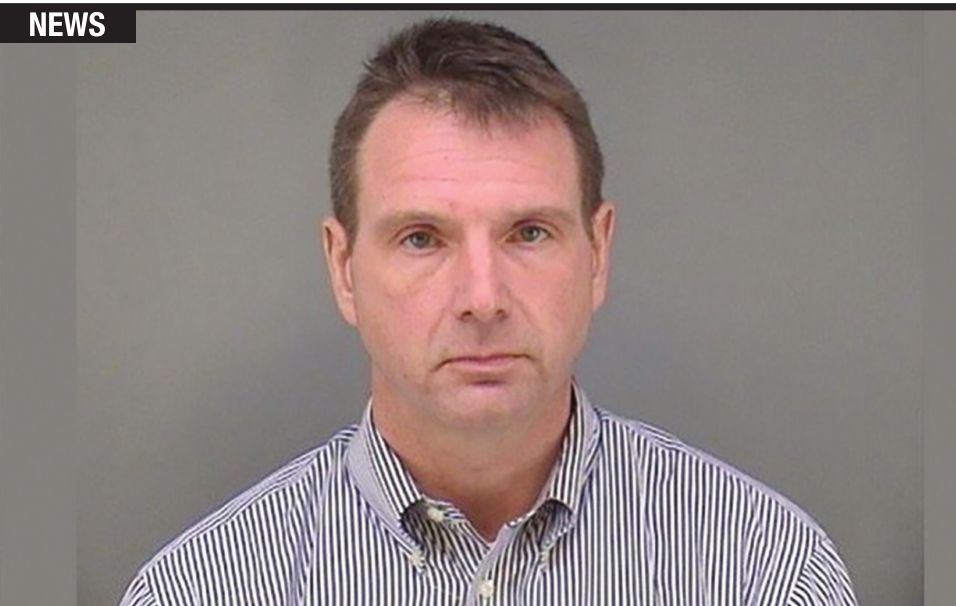
Trial midway through second week
As a former Adams County assistant state’s attorney and center for the University of Illinois football team, Curtis Lovelace is accustomed to playing offense.
Now, he’s playing defense as prosecutors attempt to convict Lovelace of murder in the 2006 death of his wife, who was found dead in bed on Valentine’s Day.
It’s proven a tough case for prosecutors.
A trial last year ended in a hung jury, with jurors reportedly evenly split over whether Lovelace killed his wife, Cory. Prosecutors say it was suffocation. The defense says she died from heavy drinking exacerbated by bulimia. Proceedings were moved to Springfield due to extensive pretrial publicity in the Quincy area.
Why would a community stalwart such as Lovelace, a former Quincy School Board member who’s enshrined in the Quincy High School Hall of Fame, murder anyone? The answer isn’t obvious, as prosecutor David Robinson acknowledged during opening statements on March 1, when he said that the prosecution isn’t required to prove motive. Look at the evidence, Robinson told jurors. And some of it is circumstantial. For instance, why did Lovelace call his boss before summoning paramedics when he discovered the body?
The failure of Dr. Jessica Bowman, who conducted the initial autopsy, to determine a cause of death is a hurdle for Lovelace’s accusers. Bowman is best known in Springfield for shortcomings so serious that Sangamon County State’s Attorney John Milhiser in 2011 said that he would not call her as a witness in murder trials, even though she had conducted autopsies for former coroner Susan Boone, who was pressured to resign as confidence in her office plummeted, in part due to questionable work by Bowman, who is on the witness list in the Lovelace trial. In one case, Bowman concluded that a Springfield toddler died of previously undiagnosed cancer. But the investigation was reopened by the state, and the man who was caring for the child when tragedy struck was charged with murder and ultimately received a 20-year sentence for aggravated battery of a child.
Prosecutors have put two forensic pathologists on the stand to buttress their case. Both told the jury that Cory Lovelace was suffocated, likely with a pillow, and both refuted Curtis Lovelace’s contention that he saw his wife alive on Feb. 14, 2006. Dr. Jane Turner told the jury that abrasions on Cory Lovelace’s face supported her conclusion that she was a homicide victim and did not succumb, as the defense asserts, to liver disease. Turner based her conclusions in part on the condition of the body, but also on a statement from the defendant, who told a detective that he’d seen his wife alive shortly before she was found dead. When defense attorney Jon Loevy mentioned liver disease as a cause of death during cross examination, the doctor flatly refuted the possibility.
“There is no sufficient evidence to support that opinion,” Turner testified. “If she died from a fatty liver, then there should have been no misrepresentation by the husband in how he saw her before she died.”
The jury has also heard from neighbors and friends who say that the Lovelace marriage was on the rocks, with frequent arguments that could be heard outside their home.
“He would tell me that she would lock him out of the house, that they would fight and he would sleep in the car, it was that kind of thing,” Amy Herkert, a family friend, stated. Catherine Meckes, who lived near the Lovelace home, testified that she was outside when she heard an argument the night before Cory Lovelace was found dead.
Erika Gomez-Steinkamp, Lovelace’s second wife, told the jury that Lovelace physically abused her near the end of their marriage and that he once called her Cory during a drunken argument. Gomez- Steinkamp, who did not testify at the first trial, also said that Lovelace once tried to grab her throat.
“I’m telling you what I went through so he doesn’t do this to other women,” Gomez- Steinkamp told the jury on Monday.
Contact Alex Camp at [email protected].